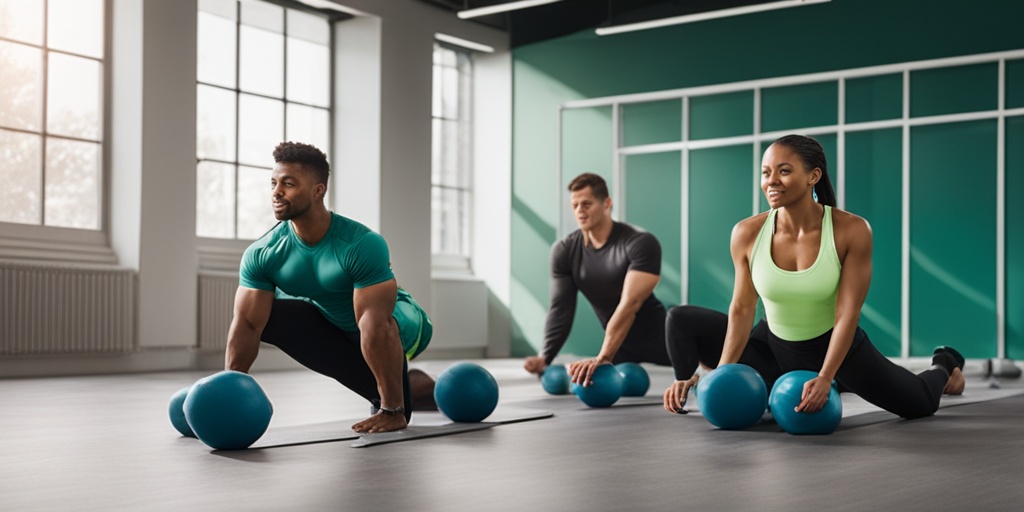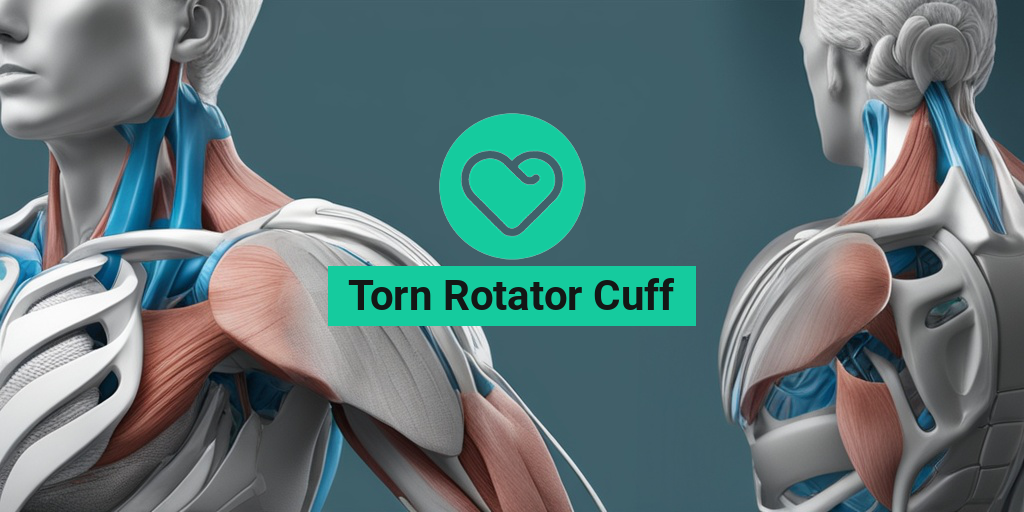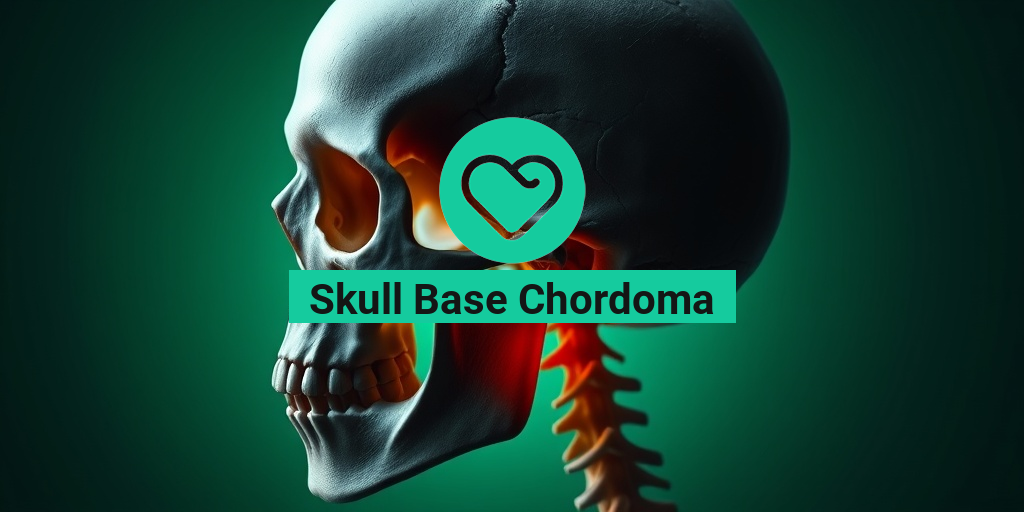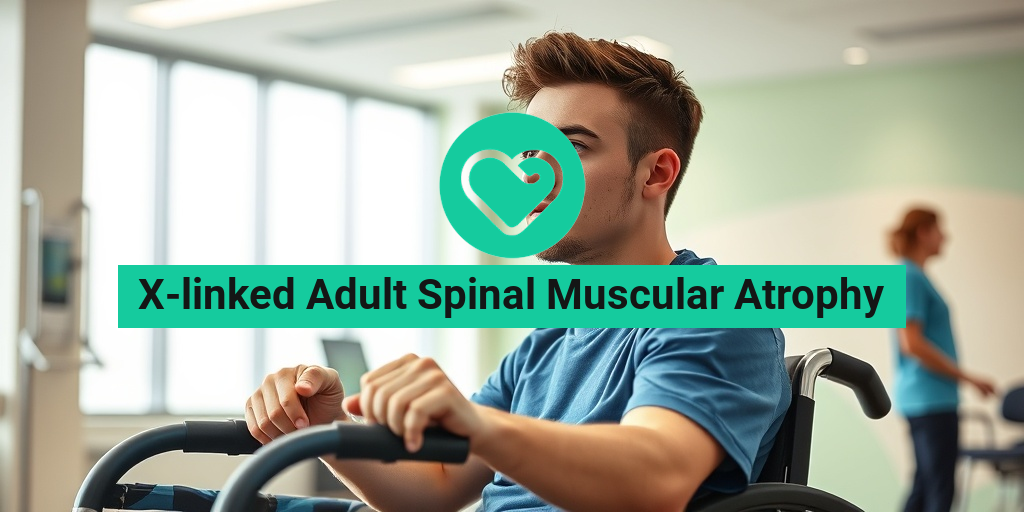“`html
What Is a Torn Rotator Cuff?
A torn rotator cuff is a common injury that affects the shoulder, often resulting from repetitive overhead activities or acute trauma. The rotator cuff is a group of four muscles and their associated tendons that stabilize the shoulder joint and allow for a wide range of motion. These muscles include:
- Supraspinatus
- Infraspinatus
- Teresa Minor
- Subscapularis
When one or more of these tendons become torn, it can lead to significant pain and dysfunction in the shoulder. This injury is particularly prevalent among athletes, especially those involved in sports that require repetitive arm movements, such as baseball, swimming, and tennis. However, it can also occur in older adults due to natural wear and tear.
Causes of a Torn Rotator Cuff
The causes of a torn rotator cuff can be categorized into two main types:
- Acute Injury: This occurs due to a sudden injury, such as falling on an outstretched arm or lifting something heavy.
- Chronic Degeneration: Over time, the tendons can wear down due to repetitive motion or age-related changes, leading to a tear.
Risk Factors
Several factors can increase the likelihood of experiencing a torn rotator cuff:
- Age: The risk increases as you age, particularly after 40.
- Occupation: Jobs that require repetitive overhead motions can contribute to the risk.
- Sports Participation: Athletes in sports that involve repetitive shoulder use are at higher risk.
Torn Rotator Cuff Symptoms
Recognizing the symptoms of a torn rotator cuff is crucial for early diagnosis and treatment. Common symptoms include:
- Pain: This is often felt in the shoulder and can radiate down the arm. Pain may worsen at night or with specific activities.
- Weakness: You may experience weakness in the shoulder, making it difficult to lift objects or perform overhead activities.
- Limited Range of Motion: A torn rotator cuff can restrict your ability to move your arm freely.
- Clicking or Popping Sounds: You might hear or feel a clicking sensation when moving your shoulder.
When to Seek Medical Attention
If you experience persistent shoulder pain, weakness, or difficulty moving your arm, it’s essential to consult a healthcare professional. Early intervention can prevent further damage and improve recovery outcomes. Diagnostic tests, such as an MRI or ultrasound, may be necessary to confirm the diagnosis and assess the extent of the injury.
Conclusion
A torn rotator cuff can significantly impact your daily life and activities. Understanding the causes and symptoms is the first step toward effective treatment and recovery. If you suspect you have a torn rotator cuff, don’t hesitate to reach out to a healthcare provider for a thorough evaluation. For more information on shoulder injuries and recovery strategies, consider visiting Yesil Health AI for evidence-based health answers. 🩺
“`

“`html
Torn Rotator Cuff Causes
A torn rotator cuff is a common injury that can cause significant pain and limit your range of motion. Understanding the causes of a torn rotator cuff is essential for prevention and effective treatment. Here are the primary causes:
1. Acute Injury
Acute injuries often occur during activities that require overhead motions, such as throwing a ball or lifting heavy objects. A sudden fall or accident can also lead to a tear. These injuries are typically characterized by immediate pain and a noticeable loss of function in the shoulder.
2. Degenerative Changes
As we age, our tendons naturally weaken and become less flexible. This degeneration can lead to tears over time, even with minimal activity. Factors contributing to degenerative tears include:
- Age: Most rotator cuff tears occur in individuals over 40.
- Repetitive Stress: Repeated overhead activities can wear down the tendons.
- Poor Posture: Slouching can affect shoulder mechanics, increasing the risk of injury.
3. Bone Spurs
Bone spurs are bony growths that can develop on the shoulder blade. These spurs can rub against the rotator cuff tendons, leading to irritation and eventual tearing. This condition is often associated with aging and can exacerbate existing shoulder issues.
4. Previous Injuries
If you’ve previously injured your shoulder, you may be at a higher risk for a torn rotator cuff. Scar tissue from past injuries can weaken the tendons, making them more susceptible to tears in the future.
Torn Rotator Cuff Risk Factors
Identifying the risk factors associated with a torn rotator cuff can help you take proactive steps to protect your shoulder health. Here are some key risk factors to consider:
1. Age
As mentioned earlier, age is a significant risk factor. The likelihood of developing a torn rotator cuff increases as you get older, particularly after the age of 40. This is due to the natural wear and tear on the tendons over time.
2. Occupation
Certain professions that require repetitive overhead movements, such as construction workers, painters, and athletes, are at a higher risk for rotator cuff injuries. If your job involves lifting or reaching frequently, it’s crucial to practice proper techniques to minimize strain on your shoulders.
3. Sports Participation
Engaging in sports that involve repetitive shoulder motions, such as baseball, swimming, or tennis, can increase your risk of a torn rotator cuff. Athletes should focus on strength training and flexibility exercises to support shoulder health.
4. Family History
If you have a family history of shoulder problems, you may be more prone to experiencing a torn rotator cuff. Genetic factors can influence tendon health and susceptibility to injuries.
5. Smoking
Smoking has been linked to a higher risk of rotator cuff tears. It can impair blood flow and reduce the body’s ability to heal, making it essential to consider quitting if you’re at risk.
6. Obesity
Excess weight can put additional stress on your joints, including the shoulders. Maintaining a healthy weight through diet and exercise can help reduce your risk of a torn rotator cuff.
By understanding the causes and risk factors associated with a torn rotator cuff, you can take steps to protect your shoulder health and seek timely treatment if necessary. If you experience symptoms such as persistent pain or weakness in your shoulder, consult a healthcare professional for an evaluation.
“`

“`html
Torn Rotator Cuff Diagnosis
Diagnosing a torn rotator cuff can be a complex process, as the symptoms often overlap with other shoulder injuries. However, understanding the diagnostic steps can help you navigate your path to recovery more effectively.
Recognizing the Symptoms
The first step in diagnosing a torn rotator cuff is recognizing the symptoms. Common signs include:
- Pain in the shoulder: This pain may radiate down the arm and can worsen at night or during specific activities.
- Weakness: Difficulty lifting objects or performing overhead activities is a significant indicator.
- Limited range of motion: You may find it hard to move your shoulder freely.
- Clicking or popping sounds: These noises may occur when you move your shoulder.
Physical Examination
Once you recognize the symptoms, the next step is to consult a healthcare professional. During a physical examination, the doctor will:
- Assess your shoulder’s range of motion.
- Check for tenderness and swelling.
- Perform specific tests to evaluate the strength of your rotator cuff muscles.
Imaging Tests
If a torn rotator cuff is suspected, your doctor may recommend imaging tests to confirm the diagnosis. Common tests include:
- X-rays: These can help rule out other issues, such as bone spurs or arthritis.
- Magnetic Resonance Imaging (MRI): An MRI provides detailed images of soft tissues, making it the gold standard for diagnosing a torn rotator cuff.
- Ultrasound: This test can also visualize the rotator cuff and assess its condition in real-time.
Understanding the diagnosis process is crucial for anyone experiencing shoulder pain. Early detection can lead to more effective treatment options and a quicker recovery. 🩺
Torn Rotator Cuff Treatment Options
Once diagnosed, the next step is exploring the various torn rotator cuff treatment options available. Treatment can vary based on the severity of the tear, your age, activity level, and overall health.
Conservative Treatments
For many patients, conservative treatments are effective in managing symptoms and promoting healing. These options include:
- Rest: Avoiding activities that exacerbate the pain is crucial for recovery.
- Ice Therapy: Applying ice packs can help reduce swelling and alleviate pain.
- Physical Therapy: A tailored exercise program can strengthen the shoulder muscles and improve flexibility.
- Medications: Over-the-counter pain relievers, such as ibuprofen or acetaminophen, can help manage pain and inflammation.
Injections
If conservative treatments do not provide relief, your doctor may recommend corticosteroid injections. These injections can help reduce inflammation and pain, allowing you to engage more effectively in physical therapy. 💉
Surgical Options
In cases of severe tears or when conservative treatments fail, surgery may be necessary. Surgical options include:
- Arthroscopic Repair: This minimally invasive procedure involves using small incisions and a camera to repair the torn tendon.
- Tendon Transfer: If the rotator cuff is severely damaged, a tendon from another part of the body may be used to restore function.
- Shoulder Replacement: In extreme cases, a partial or total shoulder replacement may be considered.
Recovery and Rehabilitation
Post-surgery, rehabilitation is crucial for a successful recovery. This typically involves:
- Physical Therapy: A structured program to regain strength and mobility.
- Gradual Return to Activities: Following your doctor’s guidelines on when to resume normal activities is essential.
Understanding your treatment options for a torn rotator cuff can empower you to make informed decisions about your health. Always consult with a healthcare professional to determine the best course of action for your specific situation. 🏋️♂️
“`

“`html
Torn Rotator Cuff Rehabilitation
Rehabilitating a torn rotator cuff can be a challenging journey, but with the right approach, you can regain strength and mobility in your shoulder. The rehabilitation process typically involves a combination of physical therapy, exercises, and sometimes surgical intervention, depending on the severity of the tear.
Understanding the Rehabilitation Process
The rehabilitation process for a torn rotator cuff generally follows these stages:
- Initial Rest and Ice: After the injury, it’s crucial to rest the shoulder and apply ice to reduce swelling and pain.
- Physical Therapy: A physical therapist will design a personalized program to help restore range of motion and strength.
- Gradual Return to Activity: As you progress, you’ll gradually return to your normal activities, incorporating specific exercises to strengthen the shoulder.
Common Rehabilitation Exercises
Here are some effective exercises that can aid in your recovery:
- Pendulum Swings: Lean forward and let your arm hang down. Gently swing your arm in small circles to promote mobility.
- Wall Climb: Stand facing a wall and use your fingers to “climb” up the wall, which helps improve range of motion.
- External Rotation: Using a resistance band, keep your elbow close to your body and rotate your forearm outward.
Always consult with your healthcare provider or physical therapist before starting any new exercise regimen to ensure it’s safe for your specific condition. 🏋️♂️
Post-Surgery Rehabilitation
If surgery is required for your torn rotator cuff, the rehabilitation process may be more intensive. Here’s what to expect:
- Immobilization: After surgery, your shoulder will likely be immobilized in a sling for several weeks.
- Physical Therapy: Once cleared by your doctor, physical therapy will begin, focusing on gentle range-of-motion exercises.
- Strengthening Phase: As healing progresses, strengthening exercises will be introduced to rebuild muscle around the shoulder.
Recovery time can vary significantly based on the severity of the tear and the type of surgery performed. Generally, full recovery can take anywhere from 4 to 6 months. ⏳
Torn Rotator Cuff Prevention Tips
Preventing a torn rotator cuff is essential, especially for those engaged in activities that put stress on the shoulder. Here are some effective tips to help you avoid this painful injury:
Strengthening Your Shoulder Muscles
Building strength in your shoulder muscles can significantly reduce the risk of injury. Consider incorporating the following exercises into your routine:
- Rotator Cuff Strengthening: Use light weights or resistance bands to perform external and internal rotation exercises.
- Shoulder Blade Squeezes: Squeeze your shoulder blades together and hold for a few seconds to strengthen the upper back.
- Push-Ups: Regular push-ups can help build overall shoulder strength, but ensure proper form to avoid strain.
Proper Warm-Up and Stretching
Before engaging in any physical activity, always warm up your muscles. Here’s how:
- Dynamic Stretching: Perform dynamic stretches that involve movement, such as arm circles and torso twists.
- Static Stretching: After your workout, incorporate static stretches to maintain flexibility in your shoulder muscles.
Ergonomic Adjustments
Making ergonomic adjustments in your daily life can also help prevent shoulder injuries:
- Workstation Setup: Ensure your workstation is set up to promote good posture and reduce strain on your shoulders.
- Proper Lifting Techniques: Always lift heavy objects with your legs, not your back or shoulders, to minimize stress on the rotator cuff.
By following these prevention tips and maintaining a strong, flexible shoulder, you can significantly reduce your risk of a torn rotator cuff. Remember, taking proactive steps today can lead to a healthier tomorrow! 💪
“`

“`html
Frequently Asked Questions
What are the common symptoms of a torn rotator cuff? 🤕
A torn rotator cuff can present various symptoms, including:
- Pain in the shoulder, especially when lifting or reaching.
- Weakness in the arm, making it difficult to perform daily activities.
- Limited range of motion in the shoulder joint.
- Clicking or popping sounds during shoulder movement.
What treatment options are available for a torn rotator cuff? 💊
Treatment for a torn rotator cuff may include:
- Physical therapy to strengthen the shoulder muscles.
- Medications for pain relief and inflammation reduction.
- Surgery may be necessary for severe tears.
How long does recovery take after rotator cuff surgery? ⏳
The recovery time after surgery can vary based on the severity of the tear and the individual’s health. Generally, it can take:
- 4 to 6 months for initial recovery.
- 6 to 12 months for full recovery and return to normal activities.
What exercises can help with a torn rotator cuff? 🏋️♂️
Exercises for rehabilitation may include:
- Pendulum swings to improve mobility.
- External rotation exercises to strengthen the shoulder.
- Scapular squeezes to enhance stability.
How is a torn rotator cuff diagnosed? 🩺
A healthcare provider may use the following methods to diagnose a torn rotator cuff:
- Physical examination to assess pain and range of motion.
- Imaging tests such as MRI or ultrasound to visualize the tear.
Can I prevent a torn rotator cuff? 🛡️
While not all tears can be prevented, you can reduce your risk by:
- Strengthening shoulder muscles through regular exercise.
- Avoiding repetitive overhead activities that strain the shoulder.
- Maintaining flexibility in the shoulder joint.
“`




